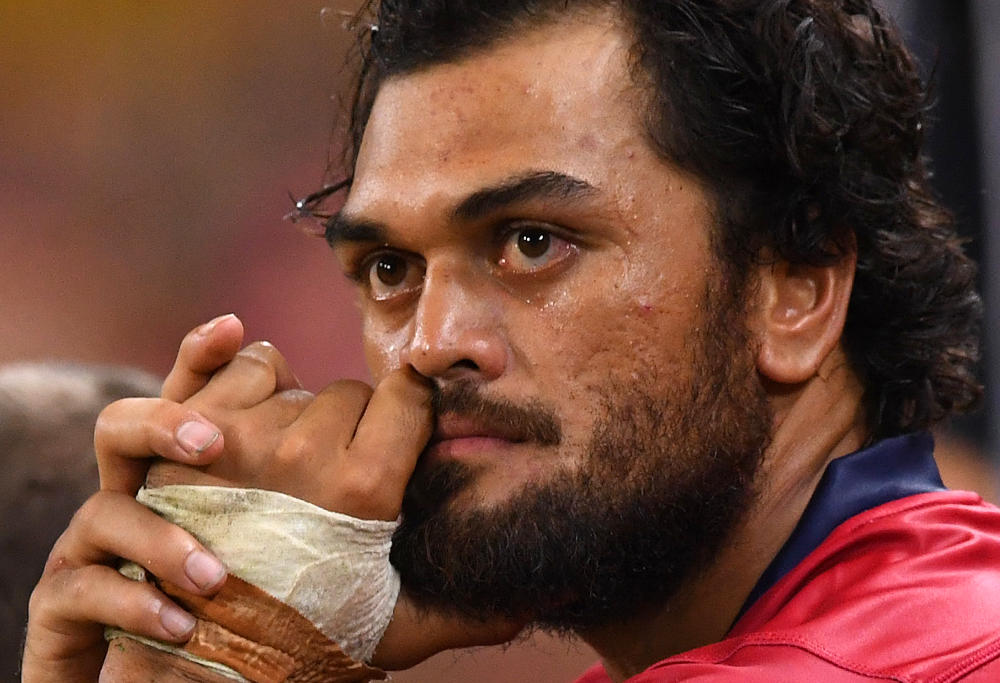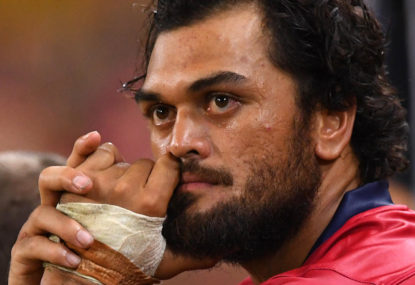There was a little bit of discussion around World Rugby’s new ‘zero tolerance’ stance on contact higher than the shoulders in the weeks heading into Round 1 of Super Rugby, with opinions equally nervous and worried on what they might happen when first used with competition points on the line.
Overall, most of us seemed to agree on the need to eliminate any contact with the head and neck from the game. Rugby has come on leaps and bounds when it comes to attitudes around head injuries and concussion, even just in recent years.
But what might a game look like if all high contact is penalised, and cards are dished out everywhere, we wondered?
Well, after the first weekend of Super Rugby, the answer to that question is ‘not that different’. But I’ll come back to this soon.
First, a recap.
Back in mid-December, you’ll recall that World Rugby announced that they had “redefined illegal (high) tackle categories and increased sanctions to deter high tackles via a law application guideline. This will apply at all levels of the game from 3 January 2017 introducing minimum on-field sanctions for reckless and accidental contact with the head, effectively lowering the acceptable height of the tackle. The guideline will be supported with a global education programme.”
A reckless tackle is now one in which “the player knew or should have known that there was a risk of making contact with the head of an opponent, but did so anyway,” and carries a yellow card as a minimum sanction.
Accidental contact is where “a player makes accidental contact with an opponent’s head, either directly or where the contact starts below the line of the shoulders,” and includes situations where the ball-carrier slips into the tackle. A penalty will be awarded as a minimum sanction.
‘Accidental contact’ are the key words here, and words we heard uttered over the weekend, but I’ll come back to that too.
For Round 1, I counted 13 yellow cards handed out across the nine games. Red-Sharks, Waratahs-Force, and Cheetahs-Lions all had two yellow cards each; Kings-Jaguares saw the yellow pointing skywards three times.
Highlanders-Chiefs was the only game where no card was dished out, which was interesting in itself.
Of those 13 yellows, only two were for high contact under the new edict: Reds lock Kane Douglas’ old-fashioned neck roll in a crudely attempted clean-out against the Sharks, and teammate Karmichael Hunt’s solid but now-illegally high hit toward the end of the same game.
Referee Nick Briant even used the term “accidental contact”, telling Hunt words to the effect, ‘He’s fallen into the tackle, but you’ve still caught him above the shoulders’.

Four months ago, it would’ve been an unfortunate penalty and slap on the back for an effective tackle that just happened to slip up, but under the new wording, this was a tackle from the explanatory notes: accidental contact, ball-carrier falling, impact slipping up above the shoulders.
And you could still mount a decent case that a penalty under the new edict would’ve been enough, particularly in light of other incidents that went un-carded over the weekend.
From the round just completed, we’re now to believe that those two tackles were the only ones yellow card-worthy under the new zero tolerance approach handed down by World Rugby in December.
There must have been upwards of 1500 tackles made over the weekend, but only two of them were deemed high. I have a little bit of trouble believing that.
Three more come immediately to mind. Sharks lock Etienne Oosthuizen made neck contact arguably worse than Douglas’ only a few minutes before Hunt was pinged. Oosthuizen was cited and subsequently suspended for the two weeks for striking Rob Simmons earlier in the game, but this incident I’m thinking of wasn’t even penalised. I’m tipping Hunt was partly frustrated by that lack of action when he made his tackle, and the Reds captain at the time – James Slipper was off by then – even raised that point as Briant showed his yellow card to Hunt.
In the Waratahs-Force game, Israel Folau was penalised in the 20th minute for a remarkably similar hit to Hunt’s, and with Ben O’Keeffe also offering the same explanation – ‘the ball-carrier slipped into the tackle’ – but no card was shown.
Force centre Billy Meekes did his very best to separate Michael Hooper’s head and body, a la Douglas, but again it was penalty only.
There were countless others across the weekend; the Highlanders-Chiefs game threatened to boil over several times, such was the level of niggle both sides got away with. That there wasn’t a single card in this game for a high shot under the new definitions was laughable, and explained why a lot of the niggle carried on.
And that’s going to be the way it is for the next few weeks. It’s obviously going to take time for zero tolerance to take hold, because clearly some referees have a much better handle on it than others.
Blues coach Tana Umaga back in January aired concerns about consistency of applications, but he also stated quite clearly that his players “are just going to have to adjust” their tackling techniques. Turns out he was just as right about the former as he was the latter.
On the weekend’s evidence, the referees have just as much adjustment to make as the players.






























































































